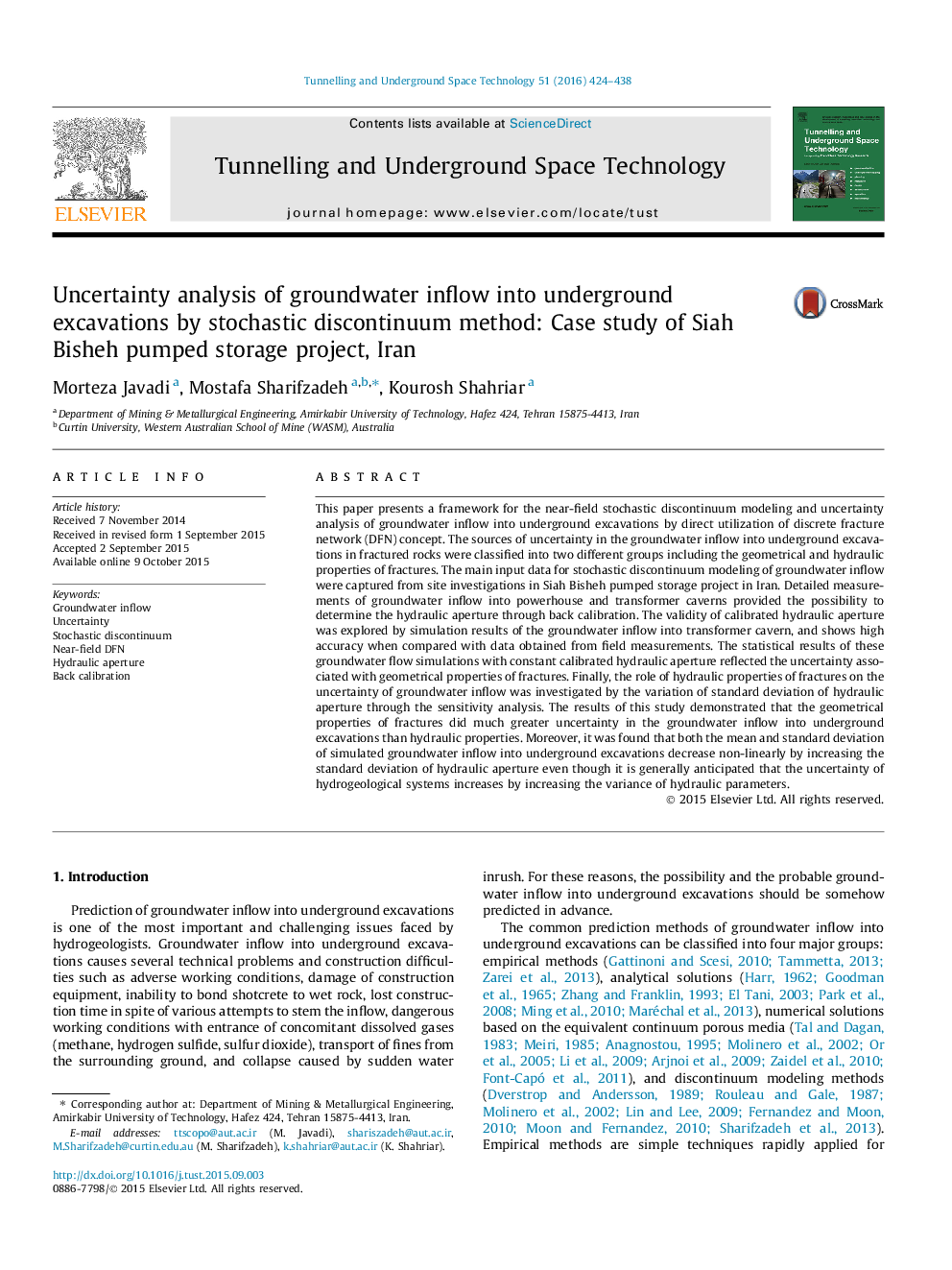| Article ID | Journal | Published Year | Pages | File Type |
|---|---|---|---|---|
| 311757 | Tunnelling and Underground Space Technology | 2016 | 15 Pages |
•The uncertainty in groundwater inflow into underground excavations was studied.•Stochastic discontinuum method was used to predict the groundwater flow uncertainty.•The simulation results compare very well to those obtained from field measurements.•The flow uncertainty is mainly controlled by geometrical properties of fractures.
This paper presents a framework for the near-field stochastic discontinuum modeling and uncertainty analysis of groundwater inflow into underground excavations by direct utilization of discrete fracture network (DFN) concept. The sources of uncertainty in the groundwater inflow into underground excavations in fractured rocks were classified into two different groups including the geometrical and hydraulic properties of fractures. The main input data for stochastic discontinuum modeling of groundwater inflow were captured from site investigations in Siah Bisheh pumped storage project in Iran. Detailed measurements of groundwater inflow into powerhouse and transformer caverns provided the possibility to determine the hydraulic aperture through back calibration. The validity of calibrated hydraulic aperture was explored by simulation results of the groundwater inflow into transformer cavern, and shows high accuracy when compared with data obtained from field measurements. The statistical results of these groundwater flow simulations with constant calibrated hydraulic aperture reflected the uncertainty associated with geometrical properties of fractures. Finally, the role of hydraulic properties of fractures on the uncertainty of groundwater inflow was investigated by the variation of standard deviation of hydraulic aperture through the sensitivity analysis. The results of this study demonstrated that the geometrical properties of fractures did much greater uncertainty in the groundwater inflow into underground excavations than hydraulic properties. Moreover, it was found that both the mean and standard deviation of simulated groundwater inflow into underground excavations decrease non-linearly by increasing the standard deviation of hydraulic aperture even though it is generally anticipated that the uncertainty of hydrogeological systems increases by increasing the variance of hydraulic parameters.
